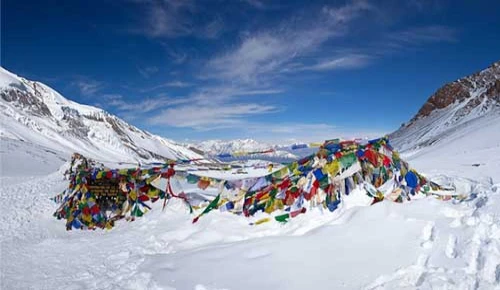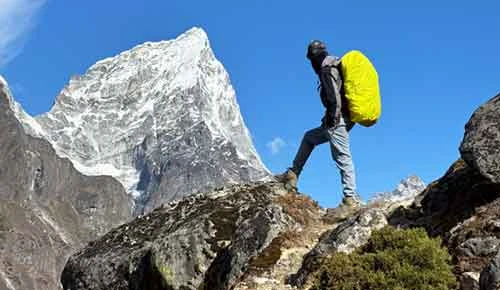Kathmandu Durbar Square: Heritage Gem of Nepal
Welcome to our blog, where we'll take you on a journey to explore the fascinating world of Kathmandu Durbar Square!
This ancient square holds a special place in the hearts of Nepalese people and is a true treasure trove of history and culture. We're excited to share with you the rich heritage, stunning architecture, and the incredible stories that make this place so unique.
Join us as we delve into the past, present, and future of Kathmandu Durbar Square, and discover why it's a must-visit destination for anyone seeking to experience the essence of Nepal.
Table of Contents
Interesting Facts about Kathmandu Durbar Square
Facts | Description |
UNESCO World Heritage Site | Recognized for its cultural and historical significance. |
Former Royal Palace | Once served as the royal palace of the Malla kings and later the Shah dynasty. |
Architecture | Showcases a blend of Newari, Indian, and Tibetan influences. |
Contents | Numerous temples, palaces, courtyards, and statues dating back centuries. |
Taleju Temple | An important religious site with a distinct multi-tiered pagoda style. |
Hanuman Dhoka Palace | Iconic landmark and former royal residence. The stone inscription at the entrance dates back to the 4th century. |
Kumari Ghar (Living Goddess House) | Residence of the revered Kumari, a young girl representing the goddess Taleju and worshipped by Hindus and Buddhists. |
Basantapur Tower (Dharahara) | The majestic nine-story tower that was destroyed by the 2015 earthquake. |
Courtyard | Used for cultural events, festivals, and traditional ceremonies. |
Woodcarvings | Intricate wood carvings on temples and palaces showcasing Newari craftsmanship. |
Kal Bhairav Statue | Represents the fierce aspect of Lord Shiva. |
Gaddi Baithak | Neoclassical palace built by Rana Prime Minister Chandra Shumsher in the early 20th century. |
2015 Earthquake | The square suffered significant damage during the earthquake, and reconstruction efforts have been ongoing. |
Stone Statues | Various stone statues of deities hold religious and cultural significance. |
Freak Street | A famous hippie hangout in the 1960s and 1970s located nearby. |
Coexistence | The architecture and layout of the square reflect the of Hinduism and Buddhism in Nepal. |
Traditional Festivals | Festivals like Indra Jatra and Ghode Jatra are celebrated with grand processions in the square. |
Cultural Hub | Kathmandu Durbar Square remains a vibrant cultural hub, representing Nepal's rich history and heritage. |
Introduction
Meanwhile, "Durbar Square" translates to "Palace Square" in Nepali, signifying its role as the center of royal palaces and important ceremonies during the reign of the Malla kings. This iconic square stands as a testament to Nepal's rich heritage and serves as a focal point for exploring the city's historical marvels and vibrant local culture.
History of Kathmandu Durbar Square
Kathmandu Durbar Square, located in Nepal's capital city, is a historic and cultural marvel. It has a long and fascinating history that dates back to ancient times. The square was once the royal palace complex, where the kings of Nepal resided and ruled the country. Over the centuries, different dynasties contributed to its development, resulting in a unique blend of architectural styles.
Originally, the square served as a royal courtyard, where important ceremonies and events took place. It gradually expanded with the addition of palaces, temples, and courtyards, making it the heart of the city's political, religious, and cultural life.
Throughout its history, the square witnessed significant events and changes in power, as different rulers came and went. Each ruler left their mark on the square, adding to its diverse architectural heritage.
The square is adorned with palaces, temples, statues, and intricate wood and stone carvings. These structures serve as a testament to the artistic and architectural achievements of the past.
Kathmandu Durbar Square has also been a witness to both joyous celebrations and moments of tragedy. It hosted various festivals, religious rituals, and public gatherings that reflected the rich cultural traditions of Nepal.
However, the square faced devastating destruction during the 2015 earthquake that struck the region. Many of its ancient structures were severely damaged, causing a loss of priceless heritage.
Since then, extensive restoration efforts have been undertaken to preserve and protect the historical site. Despite the challenges, the square remains a symbol of Nepal's cultural identity and continues to attract tourists and locals alike.
Today, Kathmandu Durbar Square stands as a living museum of Nepal's history, offering visitors a glimpse into the grandeur and splendor of the past. It serves as a reminder of the importance of safeguarding our cultural heritage for future generations to cherish and appreciate.
Architecture
Kathmandu Durbar Square boasts an array of breathtaking architectural marvels that have stood the test of time. Among the prominent features are the majestic palaces and courtyards, once serving as the residence for the royal family over the centuries.
The Hanuman Dhoka Palace stands out with its grand entrance and exquisitely designed windows, representing the pinnacle of Newari architecture. Another gem is the Nasal Chowk courtyard, surrounded by elegant buildings that showcase the pinnacle of Nepalese craftsmanship, leaving visitors in awe of their grandeur.
The square is also home to magnificent temples, each boasting its own unique features. The Taleju Temple, a prominent religious site, impresses with its multi-tiered pagoda-style structure adorned with intricate artwork. Meanwhile, the Krishna Mandir captivates visitors with its intricately carved wooden struts and beams, which narrate captivating stories from Hindu mythology.
Not to be overlooked, the Kal Bhairav Temple houses a formidable stone idol of the deity Kal Bhairav, distinguished by its striking tantric design, evoking both awe and reverence from those who visit.
A distinguishing characteristic of Kathmandu Durbar Square's architectural splendor lies in its intricate woodwork and carvings, a testament to the exceptional craftsmanship of Newari artisans.
The window frames of the palaces and temples are adorned with delicate carvings of deities, animals, and floral motifs, showcasing a level of artistic finesse that has been passed down through generations.
Among the most famous of these masterpieces is the Peacock Window, a mesmerizing work of art featuring an intricately carved peacock with outspread feathers, symbolizing grace and beauty.
UNESCO World Heritage Site
Kathmandu Durbar Square, located in the heart of Nepal's capital city, Kathmandu, is a UNESCO World Heritage Site due to its rich historical and cultural significance.
The UNESCO designation was granted in recognition of Kathmandu Durbar Square's exceptional universal value as a living heritage site that represents the city's traditions, rituals, and festivals. The square has been a center for religious and social gatherings, hosting numerous festivals and celebrations.
Even after the extensive damage during the devastating earthquake of 2015. Today, Kathmandu Durbar Square stands as a symbol of Nepal's glorious past and continues to attract visitors from all over the world. Its UNESCO status ensures that this historical marvel will be cherished and safeguarded for future generations to appreciate and admire.
Places to Explore Around
Hanuman Dhoka Palace: Located within Kathmandu Durbar Square, this historic palace complex is a UNESCO World Heritage Site and offers a glimpse into the royal history of Nepal.
Kumari Ghar (Kumari Chowk): Adjacent to Durbar Square, this building houses the living goddess "Kumari." Visitors can catch a glimpse of the Kumari during designated times.
Taleju Temple: A beautifully crafted temple dedicated to Goddess Taleju, accessible to Hindus only, but its architecture can be admired from outside.
Kalbhairav Temple: This temple is dedicated to the fearsome deity Kalbhairav and is known for its intricately carved stone idol.
Sweta Bhairava:Sweta Bhairava is Lord Shiva's scary form. During the reign of King Rana Bahadur Shah, it was installed inside the Durbar square in 1795. During the year, the mask is hidden behind a wooden curtain and is only revealed during the Indra Jatra celebration in September.
Freak Street (Jhhonchen Tole): Once a popular spot for hippies during the 1960s and 1970s, this street is now a vibrant area with shops, cafes, and cultural activities.
Basantapur Tower (Min Bhawan): Also known as the Nine-Storey Palace, it offers a panoramic view of the surrounding area from the top.
Maru Tole: A lively street market where you can find traditional handicrafts, souvenirs, and local snacks.
Indra Chowk: Another bustling market area known for its variety of goods, including textiles, jewelry, and spices.
Asan Tole: A traditional market square with a diverse range of shops, street food vendors, and a vibrant atmosphere.
Kathmandu Durbar Square Museum: A small museum within the palace complex that displays artifacts and historical objects from Nepal's royal history.
Asan Tole Ghutu: A traditional stone water spout where locals come to fetch water, providing an authentic glimpse into daily life.
Conclusion
With our one-day Kathmandu city tour, you can go on a fascinating journey through the heart of Nepal. Explore the mysterious charm of this old city as we show you its secret treasures, trace the footsteps of history through its grand landmarks, and immerse ourselves in the mix of vibrant culture that is waiting to be discovered.
Join us for a day tour in Kathmandu and you'll never forget the experience that uncover the secrets of Kathmandu Durbar Square, a place that shows how spiritual Nepal is.








